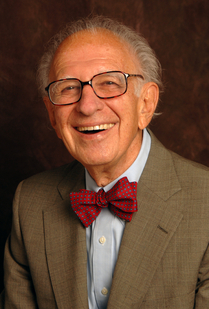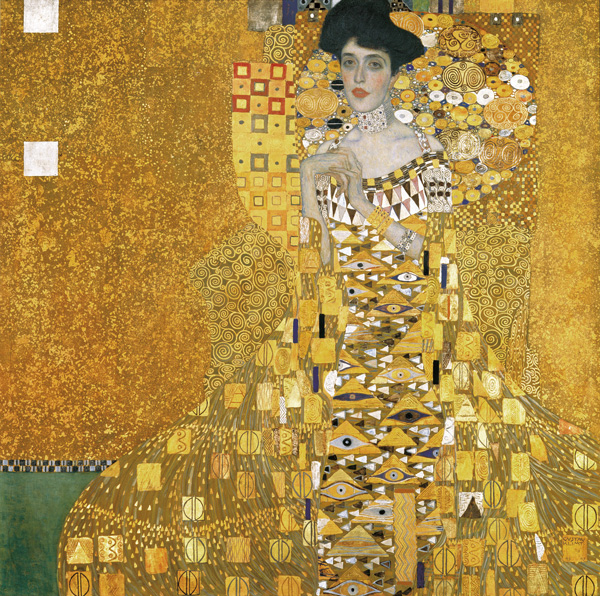Eric Kandel recently appeared on The Bat Segundo Show #452. He is most recently the author of The Age of Insight and was the 2000 recipient of the Nobel Prize in Physiology or Medicine.
Listen: Play in new window | Download
Condition of Mr. Segundo: Checking his brain in for artistic purposes.
Author: Eric Kandel
Subjects Discussed: The interdisciplinary possibilities in Vienna 1900, Gustav Klimt, Berta Zuckerkandl, how Rokitansky’s leadership at the Vienna School of Medicine influenced Freud and numerous others, Kokoschka, Egon Schiele, how the beholder plays into artistic representation, Semir Zeki and the Kanizsa triangle, how the brain distinguishes between artists based on cues, the effect of Klimt’s Judith I upon the brain, unity between the science and the humanities, Leonardo da Vinci’s reliance upon anatomy, two-directional relationships between art and neuroscience, the region of the brain that is devoted to facial representation, prosopagnosia, autism and empathy, theory of mind, Freud’s “Leonardo da Vinci, A Memory of His Childhood,” Freud and art history, Alois Riegl’s historic and critical innovations, external coherence, the futility of psychoanalyzing an artist when he’s dead, Ernst Gombrich, modern cognitive psychology emerging from Freud, an artist’s biographical details in the relationship between art and neuroscience, Kokoschka’s The Wind’s Fiancée and Schiele’s Death and the Maiden, recruiting different parts of the brain to respond to different emotional states, how the brain responds to exaggeration and hands, faces and the inferotemporal cortex, caricatures and the brain, autism and responding to bodily motion, James-Lange theory, Walter Cannon, Hugo Critchley, how much we presently understand the insula, top-down processing, the universal functions of art, Dennis Dutton’s two views of art (the mind as a blank slate, art as an instinctive evolutionary trait), Arthur Schnitzler’s interior monologues, whether art can be on the same evolutionary level as the opposable thumb, retinal ganglion cells, Stephen W. Kuffler and on-center and off-center neurons, Mach bands, the dalmatian illusion, how the brain uses contrast, Ramachandran and peak shift, gestaltian intake of faces, the symbolic value of Velázquez’s Las Meninas, and when reductionist approaches to science are helpful.
EXCERPT FROM SHOW:
Correspondent: You point out quite early on in this book that there was something about the liberal intellectual spirit in Vienna 1900 that permitted all these fascinating interdisciplinary possibilities. You have the Vienna School of Medicine, which becomes this vital part of culture for Viennese artists and intellectuals. You have Klimt, who’s studying biology informally with Berta Zuckerkandl and he also has these amazing three panels that he does for the University of Vienna. As you point, they are rejected for being too radical, too pornographic, and too ugly. So just to start things off here, and we’ll get into the science in a bit, what specific factors do you feel allowed this golden age of collisional ideas to happen? I mean, from the vantage point of the 21st century, what lessons can neuroscience and biology take away from this really flourishing period?
 Kandel: I think what is really so important is, as you pointed out, that there was an interaction between science, literature, and arts that was really unusual. And this began with the School of Medicine, which had great leadership at that time. Under the leadership of a guy called Rokitansky who introduced modern scientific medical practice by developing clinical/pathological correlations to a more systematic way than it had ever been. He felt that when you listened to a patient’s heart and you hear an abnormal sound, you don’t know which valve it’s coming from or exactly what is the disorder of the valve. And so he collaborated with a clinician. And the clinician described the patient’s sounds from the heart and the lungs in great detail. But if the patient died, they collaborated together to do an autopsy on him to figure out exactly what valve was involved and how. And that gave rise to the scientific medicine we now practice. And Rokitansky realized that the truth is often hidden from the surface. And you have to go deep below the surface to get there.
Kandel: I think what is really so important is, as you pointed out, that there was an interaction between science, literature, and arts that was really unusual. And this began with the School of Medicine, which had great leadership at that time. Under the leadership of a guy called Rokitansky who introduced modern scientific medical practice by developing clinical/pathological correlations to a more systematic way than it had ever been. He felt that when you listened to a patient’s heart and you hear an abnormal sound, you don’t know which valve it’s coming from or exactly what is the disorder of the valve. And so he collaborated with a clinician. And the clinician described the patient’s sounds from the heart and the lungs in great detail. But if the patient died, they collaborated together to do an autopsy on him to figure out exactly what valve was involved and how. And that gave rise to the scientific medicine we now practice. And Rokitansky realized that the truth is often hidden from the surface. And you have to go deep below the surface to get there.
And that is a metaphor that influenced Freud, that influenced Klimt, that influenced all of these people. That surface appearances are misleading. They were also influenced by Darwin and they realized that humans are wonderful creatures, but they involved from simple animal ancestors and we have instinctual drives that we share with other animals. And Freud picked this up — he was sort of the Darwin of the mind — and realized that when human beings interact, they interact through surface appearances. There are a lot of processes that are hidden from them. The unconscious mind, which he really developed in great detail. And these ideas were also picked up by the artists. They were in part influenced by Freud, but in part on their own. So Freud had a very good understanding of many aspects of the human mind, but didn’t understand female sexuality at all. Klimt had a very profound understanding of female sexuality and in his drawings of women, which are absolutely just marvelous, he depicts women having their own independent sexual life, masturbating, pleasuring themselves without the presence of a man, without feeling obligated to look out at the viewer, as if that was the necessary thing for satisfying them. They could have their own fantasy life. And also that eroticism could be fused with aggression, as in a very famous painting of Judith and Holofernes. So he had tremendous insight into the human psychology. This was carried further by Kokoschka and Schiele, two of his disciples if you will. Kokoschka focused this self-analysis on himself. This analysis on himself showed how his own unconscious processes were recruited, realized that he could depict adolescent sexuality. He was the first artist to depict adolescent female nudes, pointed out sexual struggles between really young children. He has a very famous painting of the Stein children. A brother and sister. Both aggressive and erotic components involved in their interaction. And then finally Schiele, who studied himself almost exclusively, using himself as an object for exploring unconscious mental processes. Just an extraordinary period.
 Correspondent: Sure. Well, let’s talk about Egon Schiele. His self-portraits in the book, many of which expressed, as you were saying here, this eroticism, this anxiety. In the case of Self-Portrait with Striped Armlets, it depicts him as a fool. He depicts himself as a fool. So his anxiety may very well evoke this fear in the beholder, or the viewer. But there’s a difference between what Schiele experienced and what he chose to express. So it’s possible that he may have exaggerated or distorted.
Correspondent: Sure. Well, let’s talk about Egon Schiele. His self-portraits in the book, many of which expressed, as you were saying here, this eroticism, this anxiety. In the case of Self-Portrait with Striped Armlets, it depicts him as a fool. He depicts himself as a fool. So his anxiety may very well evoke this fear in the beholder, or the viewer. But there’s a difference between what Schiele experienced and what he chose to express. So it’s possible that he may have exaggerated or distorted.
Kandel: Oh, there’s no question. I mean, I think what he tried to depict is the essential anxiety of modern man. And he depicted this in a lot of artificial ways in order to bring them out. He was very much influenced by Charcot and the postures that people could assume while under hypnosis. And he actually postured in order to convey these emotions. And also he was shocking. He painted himself masturbating in the mirror in order to make clear that no emotion is alien to him. And he’s willing to share that with the beholder.
Correspondent: Well, if a painting is a buffer between the artist and the beholder, how do scientific developments account for what the artist withholds or decides to distort? Or what the beholder might in fact misinterpreted or be tricked into interpreting? There are many illusions in this book too.
Kandeel: This is, of course, true. The sign of a great painting is its ambiguity. It allows you and me to bring different things to bear on it. And depending upon our relative sophistication on a particular subject, or a particular sub-subject, we would interpret it in different ways. So I think this is part of the greatness of art, that it allows different people to bring their own experiences to bear on it in an individualistic way.
 Correspondent: The key element in assessing the relationship between art and neuroscience is the beholder. Now Semir Zeki has argued that the Kanizsa triangle, where we see these three…
Correspondent: The key element in assessing the relationship between art and neuroscience is the beholder. Now Semir Zeki has argued that the Kanizsa triangle, where we see these three…
Kandel: These illusory contours. They’re not there. We make them up. Zeki, of course, one of the pioneers in visual perception, is in an ideal position to point out that the brain is a creativity machine, which art historians in Vienna 1900 began to appreciate. That we don’t reproduce in our head what we see in the outside world. That’s not a detail of reproduction. We construct it. We take it apart. And we build it together again. So the beholder undergoes a creative process that parallels what the artist undergoes. It’s an amazing set of insights.
Correspondent: And that Zeki experiment is one example of the beholder responding to cues. Zeki also discovered in another experiment that no matter what type of art was presented to the subject, the same areas of the prefrontal cortex are going to light up. So if the biology of beauty, as you write, has varied very little over the centuries and also across cultures, my question to you is why are these cues and our biases so universal? I mean, how does the brain distinguish between, say, Klimt and Hopper?
Kandel: Well, it clearly sees different forms. But that does not mean that those two painters can evoke certain common responses. And what you’re seeing is the common responses. There are also distinctive elements between the two. So there’s a loneliness that Hopper depicts that you never see in Klimt.
Correspondent: You are very precise when speculating upon Klimt’s Judith and its effect on the brain. You write that the gold hues, the soft body, and the colors trigger the release of dopamine and that Judith’s sadistic gaze might release norepinephrine. And this demonstrates that art has an effect on neuroscience. But it also seems to imply that this connection is almost a one directional flow. In light of E.O. Wilson’s hope for unity between biology and the humanities, and in consideration of the impact of Freud’s ideas have had on the Viennese Secession, I’m wondering how 21st century neuroscience has an effect on art in the other direction.
Kandel: You mean, how neuroscientists are likely to influence the arts?
Correspondent: Exactly. Anything on the level of how they influenced in Vienna.
Kandel: As you pointed out, it’s very easy to see how art influences science. Neuroscientists consider it as one of the great aspirations of the field to understand how we respond to works of art, how artists and how creativity takes place. What can art historians and artists take away from neuroscience? Well, Leonardo da Vinci spent a lot of time dissecting bodies when he was interested in getting a realistic depiction of human form, of people walking, of just how the various bones go together in order to form the body, and he learned an enormous amount by studying anatomy. So the hope is that as we know more about the biology of creativity, we know more about perception, we will excite artists to think about new art forms that may bring those things out even more effectively. Also, if they learn one of the kinds of stimuli that really turn on different regions of the brain, they might be able to play upon their skills to bring out those things even more. So one would hope this would be a dialogue that would go in both directions and have some impact on art as well.
The Bat Segundo Show #451: Eric Kandel (Download MP3)
